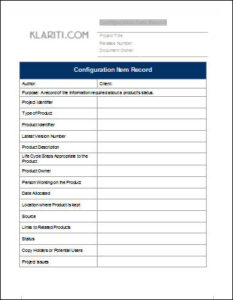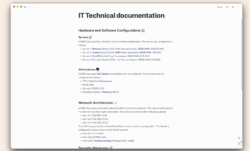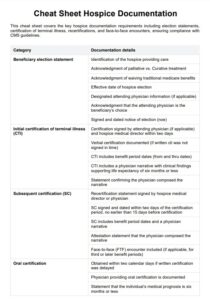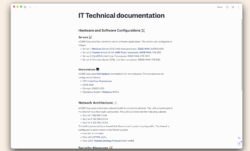So, you’re diving into the exciting world of Salesforce, a platform known for its power and flexibility. But let’s be honest, the sheer amount of customization and configuration possible can quickly turn into a documentation nightmare if you’re not careful. Imagine trying to onboard a new team member who’s faced with a Salesforce org that’s been built over years without a clear roadmap. That’s where a robust Salesforce technical documentation template comes in to save the day. It’s not just about ticking a box; it’s about creating a living, breathing guide to your Salesforce setup that everyone can understand and contribute to.
Think of a Salesforce technical documentation template as your organization’s Salesforce encyclopedia. It details everything from custom objects and fields to complex workflows and integrations. It clarifies the “why” behind the “what,” explaining the business rationale for specific configurations. This clarity is invaluable for troubleshooting, future development, and ensuring everyone’s on the same page when it comes to how Salesforce supports your business processes. It’s all about reducing the “tribal knowledge” and making your Salesforce environment more maintainable and scalable.
In this article, we’ll explore what makes a great Salesforce technical documentation template, why it’s essential for your organization’s success, and how you can create one that actually gets used. We’ll also look at some best practices to ensure your documentation remains current and relevant as your Salesforce org evolves. So buckle up, and let’s get started on the journey to creating a well-documented and easily understandable Salesforce environment.
Why a Salesforce Technical Documentation Template is a Must-Have
Let’s face it, documentation often gets a bad rap. It’s seen as a tedious chore, something to be done only when absolutely necessary. But when it comes to Salesforce, neglecting documentation can have serious consequences. A well-structured Salesforce technical documentation template is more than just a nice-to-have; it’s a critical component of a successful Salesforce implementation.
First and foremost, it reduces the risk of knowledge loss. People move on, roles change, and tribal knowledge disappears with them. Without proper documentation, you’re essentially relying on individual memories to understand how your Salesforce org works. This is a recipe for disaster, especially when troubleshooting issues or making changes. A Salesforce technical documentation template ensures that key information is captured and accessible to everyone, regardless of who originally configured the system. This becomes increasingly crucial as your organization grows.
Secondly, it greatly simplifies onboarding and training. Imagine trying to get a new Salesforce administrator up to speed on a complex Salesforce setup without any documentation. It would be a frustrating and time-consuming process for both the new administrator and the person trying to train them. With a comprehensive template, new team members can quickly get a grasp of the Salesforce environment and start contributing effectively sooner. They can understand the existing setup, business rules, and established processes without constantly needing to ask questions.
Furthermore, it facilitates better communication and collaboration. When everyone has access to the same information about the Salesforce configuration, it’s easier to discuss potential changes and improvements. Developers can understand the impact of their code changes, and business users can provide informed feedback. This collaborative approach leads to better solutions and fewer misunderstandings. A clear salesforce technical documentation template ensures that the developers, admins, and business users are speaking the same language.
Finally, it helps with compliance and auditing. In regulated industries, proper documentation is often a requirement for demonstrating compliance. A well-maintained template can provide auditors with the information they need to verify that your Salesforce setup is compliant with relevant regulations and standards. This can save you time, money, and potential headaches down the road. Ensuring your data security measures are clearly documented is also vital for maintaining customer trust and avoiding costly data breaches.
Key Elements of an Effective Template
A great Salesforce technical documentation template should include sections for various aspects of your Salesforce org, such as custom objects and fields, workflows and process builders, validation rules, integrations, security settings, and reports and dashboards. Each section should include detailed descriptions, purpose, and any relevant screenshots or diagrams. It should explain the business purpose of each element, not just how it’s configured.
Building Your Own Salesforce Technical Documentation Template
Creating a Salesforce technical documentation template might seem daunting, but it’s definitely achievable with a structured approach. Start by identifying the key components of your Salesforce org that need to be documented. This includes custom objects, fields, workflows, process builders, validation rules, integrations, security settings, reports, dashboards, and any custom code you’ve implemented. Consider dividing the documentation into modules or sections based on functionality or business process. This will make it easier to navigate and maintain.
Next, define a consistent structure for each section. For example, each custom object should have a description of its purpose, a list of its fields with descriptions, any validation rules that apply to it, and any workflows or process builders that are triggered by it. Use a clear and concise writing style, avoiding technical jargon as much as possible. Remember that your documentation is for everyone, not just technical experts.
Then, incorporate visuals. Screenshots and diagrams can be incredibly helpful for understanding complex processes or configurations. Include screenshots of key settings and configurations, and use diagrams to illustrate workflows and integrations. Consider using tools that can automatically generate diagrams from your Salesforce metadata. This can save you a lot of time and effort.
Choose a documentation format that works for your team. Options include a shared document (such as Google Docs or Microsoft Word), a wiki, a dedicated documentation tool, or even a Salesforce custom object designed for documentation. The key is to choose a format that is easily accessible, editable, and searchable. Make sure everyone on your team understands how to use the documentation format and how to contribute to it.
Finally, establish a process for keeping your documentation up to date. This is perhaps the most critical aspect of documentation. Documentation that is outdated is worse than no documentation at all. Assign responsibility for maintaining specific sections of the documentation, and set a schedule for reviewing and updating the documentation regularly. Integrate documentation updates into your development process, so that any changes to the Salesforce configuration are automatically reflected in the documentation.
The initial effort to set this up is significant, but the payoff in terms of efficiency, clarity, and maintainability is well worth it. This process of defining the fields, documenting their purpose, and illustrating the flows will pay off tremendously.
Consider leveraging tools and applications available on the AppExchange that can help automate the documentation process. These tools can analyze your Salesforce org and automatically generate documentation based on your metadata. This can save you time and ensure that your documentation is accurate and up to date. Consider this as an investment that will greatly increase your team’s efficiency and reduce risks.
This is all about making life easier when it comes to navigating Salesforce and knowing exactly what everything does. By taking the time to establish this good practice, you’ll be setting up your business for scalable success.



